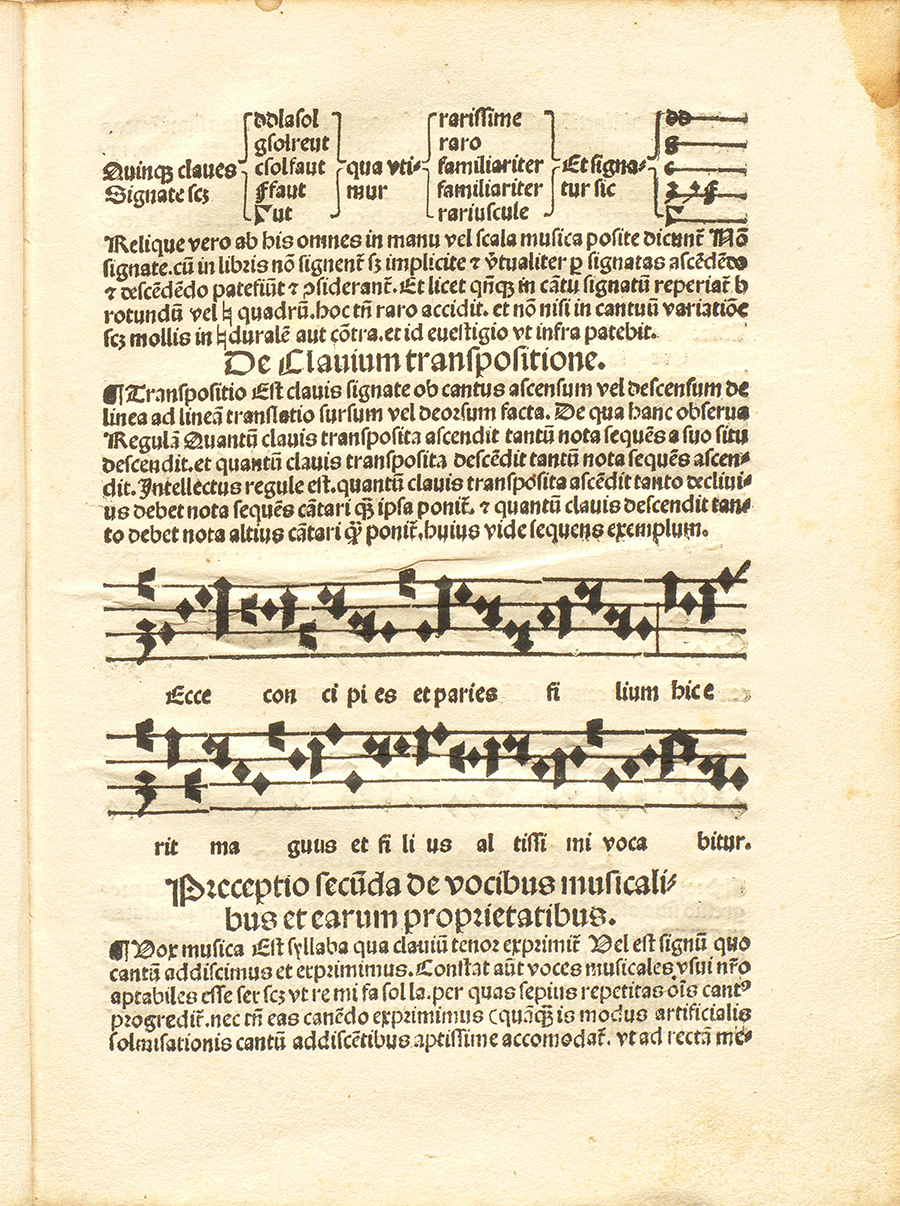Verzeichnis deutscher Musikdrucke des 16. Jahrhunderts
Catalogue of sixteenth-century German printed music
[Leipzig]: [Melchior Lotter the Elder], [1514], vdm: 418
multiple impression
red text, red type on title page
Schwabacher is used only for letters not available in the other fonts, such as “Y”. Antiqua is used for the preface. Lotter has type for ♮ signs, which are set in the text(!). A full-length staff is printed from seven shorter blocks (six of 17 mm and one of 5 mm). Red text and red lines for a table on A5r. The examples for the modes on C1v are printed in landscape format (staff lines vertical).
Hufnagel notation
full-length staff (four staff lines, A4r): 107 x 13 mm; full-length staff (five staff lines, B2v): 107 x 16.5 mm; height of virga (1): 11 mm; height of virga (2): 6 mm
In the theoretical examples, Burchardi often gives two clefs: C and F, or C and G.
example in theory book
Basic introduction into music theory: clefs, transposition, hexachords and solmisation, mutation, musica ficta, modes, psalm tones.
A copy of one of the variant editions, not specified by year of publication, was held in the library of Ferdinand Columbus (ca. 1510-1539, no. 1865) (see Plamenac).
Giselbrecht, Elisabeth. “Melchior Lotter: a German ‘Music Printer’,” in Early Music Printing in German-Speaking Lands, ed. Andrea Lindmayr-Brandl, Elisabeth Giselbrecht and Grantley McDonald. London: Routledge, 2018: 123–134. (p. 127, fn. 10)
Plamenac, Dragan. “Excerpta Colombiniana: Items of musical interest in Fernando Colóns 'Regestrum.” In: Micelánea en Homenaje a Monsenor Hinigo Angles, Barcelona 1958-1961, vol. 2, pp. 663-687. (p. 674)
